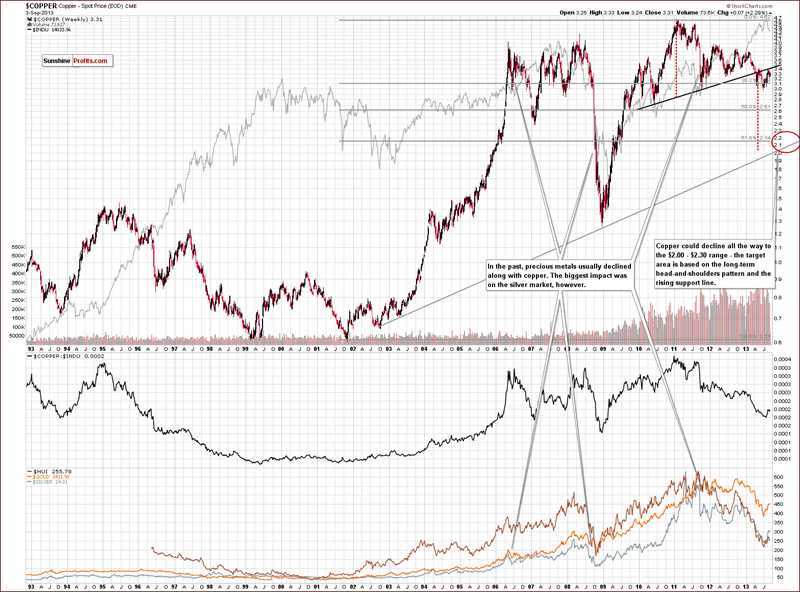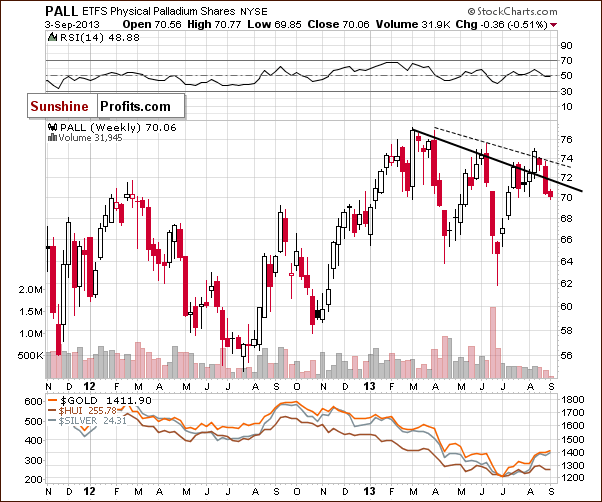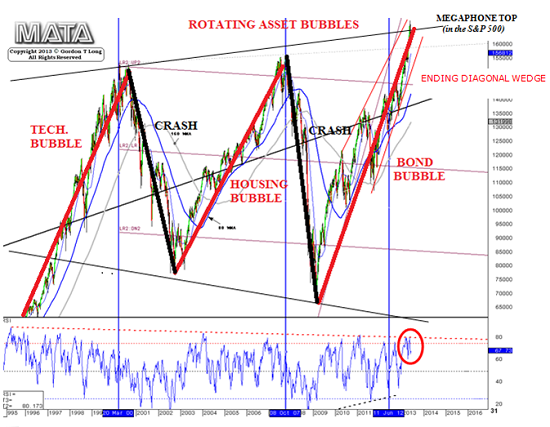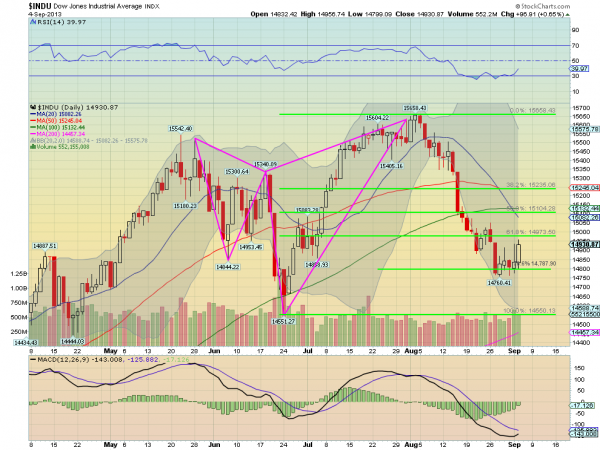by Tyler Durden
Submitted by David Stockman via LewRockwell.com,
Next week Congress can do far more than stop a feckless Tomahawk barrage on a small country which is already a graveyard of civil war and sectarian slaughter. By voting “no” it can trigger the end of the American Imperium - five decades of incessant meddling, bullying and subversion around the globe which has added precious little to national security, but left America fiscally exhausted and morally diminished.
Indeed, the tragedy of this vast string of misbegotten interventions - from the 1953 coup against Mossedegh in Iran through the recent bombing campaign in Libya - is that virtually none of them involved defending the homeland or any tangible, steely-eyed linkages to national security. They were all rooted in ideology—that is, anti-communism, anti-terrorism, humanitarianism, R2Pism, nation-building, American exceptionalism. These were the historic building blocks of a failed Pax Americana. Now the White House wants authorization for the last straw: Namely, to deliver from the firing tubes of U.S. naval destroyers a dose of righteous “punishment” that has no plausible military or strategic purpose. By the President’s own statements the proposed attack is merely designed to censure the Syrian regime for allegedly visiting one particularly horrific form of violence on its own citizens.
Well, really? After having rained napalm, white phosphorous, bunker-busters, drone missiles and the most violent machinery of conventional warfare ever assembled upon millions of innocent Vietnamese, Cambodians, Serbs, Somalis, Iraqis, Afghans, Pakistanis, Yemeni, Libyans and countless more, Washington now presupposes to be in the moral sanctions business? That’s downright farcical. Nevertheless, by declaring himself the world’s spanker-in-chief, President Obama has unwittingly precipitated the mother of all clarifying moments.
The screaming strategic truth is that America no longer has any industrial state enemies capable of delivering military harm to its shores: Russia has become a feeble kleptocracy run by a loud-mouthed thief and the communist party oligarchs in China would face a devastating economic collapse within months were it to attack its American markets for sneakers and Apples. So the real question now before Congress recurs: how is it possible that the peace-loving citizens of America, facing no industrial-scale military threat from anywhere on the planet, find themselves in a constant state of war? The answer is that they have been betrayed by the beltway political class which is in thrall to a vast warfare state apparatus that endlessly invents specious reasons for meddling, spying, intervention and occupation.
In pursuit of nothing more ennobling than raw self-perpetuation, the propaganda machinery of the warfare state - along with its media affiliates such as the War Channel (CNN) and the War Press (Washington Post) - have over recent decades churned out a stream of vastly exaggerated “threats”, falsely transforming tin-pot dictators and tyrants like Ho Chi Minh, Daniel Ortega, Slobodan Milosevic, the Taliban, the Ayatollah Khomeini, Saddam Hussein and now Bashar Assad into dangerous enemies. At length, triggering incidents are concocted such as the phony gulf of Tonkin episode, the Madison Avenue based fabrications about Iraqi soldiers stealing babies from incubators in Kuwait, the vastly exaggerated claims of ethnic cleaning in Kosovo, and Saddam’s reputed WMDs. Eventually, the drumbeat for military intervention is cranked to a fever pitch, and cable TV drives it home with non-stop telestrators and talking heads. Only after the fact, when billions in taxpayer resources have been squandered and thousands of American servicemen have been killed and maimed, do we learn that it was all a mistake; that the collateral destruction vastly exceeded the ostensible threat; and that there remains not a trace of long-term security benefit to the American people.
Setting aside the self-evident catastrophes in Vietnam, Afghanistan and Iraq, even the alleged “good” interventions are simply not what they are cracked up to be by warfare state apologists. The 1991 Persian Gulf War, for instance, only insured that Saddam Hussein would not get the oilfield revenues from what he claimed to be Iraq’s “19th province” so that he could fund projects to placate his 30 million deprived, abused and restless citizens. Instead, the loot was retained for the benefit of the despicable Emir Al- Sabah IV and a few hundred gluttonous Kuwaiti princes.
Yet in the long-run, “saving” the Kuwaiti regime and its unspeakably decadent opulence did not lower the world price of oil by a dime (Iraq would have produced every barrel it could). And it most surely subtracted from national security because it resulted in the permanent basing of 10,000 U.S. troops on Saudi soil. This utterly stupid and unnecessary provocation was the very proof that “infidels” were occupying Islamic holy lands—the principal leitmotif used by Osama bin Laden to recruit a few hundred fanatical jihadists and pull off the flukish scheme that became 9/11.
Likewise, the “triumph” of Kosovo is pure grist from the national security propaganda mill. The true essence of the episode was a mere swap-out among the ethnic cleansers: The brutal Serbian army was expelled from Kosovo so that the Albanian thugs of the KLA (Kosovo Liberation Army which was on the terrorist list until it was mysteriously dropped in 1998) could liquidate minority Serbs and confiscate their property—–a tragic routine that has been going on in the Balkans for centuries.
The recurrent phony narratives that generate these war drum campaigns and then rationalize their disastrous aftermath are rooted in a common structural cause: a vastly bloated war machine and national spying apparatus, the Imperial Presidency and the house-trained lap-dogs which occupy the congressional intelligence, foreign affairs and defense committees. This triangle of deception keeps the American public bamboozled with superficial propaganda and the media supplied with short bursts of reality TV when the Tomahawks periodically let fly.
But it is the backbone of the permanent warfare state bureaucracy that keeps the gambit going. Presidents come and go but it is now obvious that virtually any ideological script - left or right - can be co-opted into service of the Imperium. The Obama White House’s preposterous drive to intervene in the Syrian tinderbox with its inherent potential for fractures and blowback across the entire Middle East is being ram-roded by the dogma of “responsibility to protect”. In that context, its chief protagonists—Susan Rice and Samantha Power - are the moral equivalent of Bush’s neo-con hit-men, Douglas Feith and Paul Wolfowitz. In both cases, ideological agendas which have absolutely nothing to do with the safety of the American people were enabled to activate the awful violence of the American war machine mainly because it was there, marching in place waiting for an assignment.
And that truth encapsulates the inflection point now upon us. There should be no $650 billion war machine with carrier battle groups and cruise missile batteries at the ready to tempt Presidents to heed the advice of ideological fanatics like Power and Wolfowitz. The cold war ended 25 years back, and like in 1919 and 1946 the American war machine should have been drastically demobilized and dismantled long ago; it should be funded at under $300 billion, not over $600 billion. The five destroyers today menacing the coast of Syria should have been mothballed, if not consigned to the scrap yard. No President need have worried about choosing sides among ethnic cleansers in Kosovo or Islamic sectarians and tribalists in Syria because his available tool-kit would have been to call for a peace conference in Portsmouth, New Hampshire, not a Tomahawk strike from warships in the Eastern Mediterranean.
In this context, Barack Obama may yet earn his Nobel Peace prize, owing to the Syria debate he has now unleashed. It will finally show that there is no threat to America’s security lurking behind the curtain in the Middle East—only a cacophony of internal religious, ethnic, tribal and nationalist conflicts that will eventually burn themselves out. Rather than the “new caliphate” of Fox News’ demented imagination, the truth on the ground is that the Islamic world is enmeshed in a vicious conflict pitting the Shia axis of Iran, Syria, Southern Iraq and the Hezbollah-Lebanon corridor against the surrounding Sunni circle which is nominally aligned with the Syrian rebels. Yet even the Sunni world is noisily fracturing, with Turkey and Qatar lined-up with the Muslim Brotherhood and Saudi Arabia and the other Gulf State aligned with the Egyptian generals. Meanwhile, Jordan cowers in the shadows.
The cowardly hypocrisy of the Arab League should tell the Congressional rank-and-file all they need to know about why we should stay out of Syria and shut down the CIA-sponsored rebel training camp in Jordan through which Saudi arms, including chemical weapons according to some reports, are being interjected into the slaughter in Syria. If the Assad regime is truly an existential threat to regional peace and stability, let Saudi Arabia and Turkey take it out. After all, during the last several decades they have received a combined $100 billion in advanced aircraft, missiles, electronic warfare gear and other weaponry from American arms merchants financed by the US government.
Needless to say, the spineless Arab League/Saudi potentates who are now demanding “deterrence” never intend to do the job themselves, preferring to stealthily hold the coats of American mercenary forces instead. The truth is that at the end of the day, they find the threat of Iranian retaliation far more compelling than ending Assad’s brutality or building a pipeline through a prospective Sunni-controlled Syria to supply Qatar’s natural gas to European markets.
That leaves the need to dispatch the final and most insidious myth of the warfare state: namely, the lie that Iran is hell-bent on obtaining and using nuclear weapons. Even the CIA’s own intelligence estimates refute that hoary canard. And whatever the proper share of blame ascribable to each side for failed nuclear negotiations in the past, the Iranian people have once again freely elected a President who wishes to normalize relationships with the US and its allies - notwithstanding the cruel and mindless suffering visited upon them by the West’s misbegotten economic “sanctions”. Indeed, if Obama had the wisdom and astuteness President Eisenhower demonstrated going to Korea, he would be now headed for a peace conference table in Tehran, not the war room in the White House.
So let the sun shine in. Perhaps the unruly backbenchers on Capitol Hill will now learn that they have been sold out by their betters on the jurisdictional committees, such as knee-jerk hawks like Senators Feinstein and Menendez, who chair the key Senate committees, and Mike Rogers who chairs the House (alleged) Intelligence Committee. If they do, they will understand that the US has no dog in the Middle East hunt, and that the wise course of action would be a thorough-going retreat and disengagement from the internecine conflicts of the Levant, North Africa and the Persian Gulf, just as Ronald Reagan discovered after his nose was bloodied in Lebanon. But however the current debate specifically unfolds, the good news is that the world greatest deliberative body is now back in charge of American foreign policy. By long standing historical demonstration, the US Congress specializes in paralysis, indecision and dysfunction. In the end, that is how the American warfare state will be finally brought to heel and why the American Imperium will come to an end - at last.
See the original article >>












 ECB President Mario Draghi
ECB President Mario Draghi






















